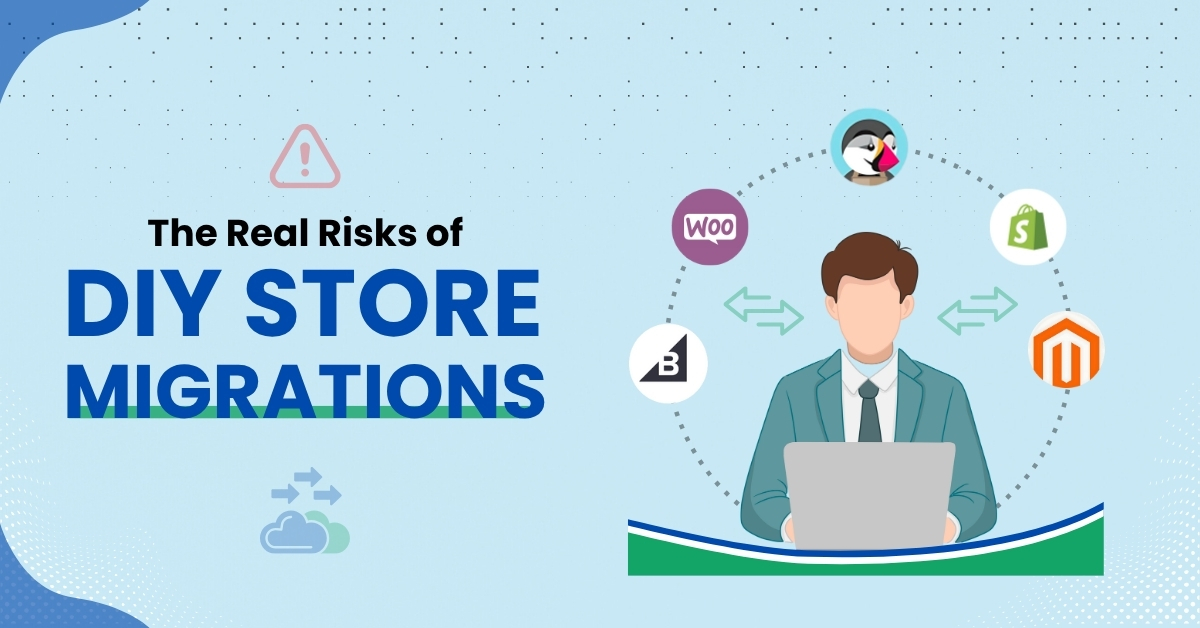Introduction: Supplier Feeds as the Lifeblood of eCommerce
In modern eCommerce, a store is only as strong as the data that powers it. From product listings to stock availability and order tracking, every detail originates from one critical source: supplier feeds.
Whether a business runs on Shopify, WooCommerce, PrestaShop, Magento, or a custom-built platform, supplier feeds form the foundation of its operations. They determine what products appear in the catalog, how inventory is updated, and how orders are processed. When these feeds are complete, accurate, and timely, the store runs like a well-oiled machine.
But when supplier feeds have data gaps—missing product fields, inconsistent formats, or failed syncs—the consequences ripple across the entire business. Products don’t appear in-store, customers see outdated details, inventory counts become unreliable, and operations slow down. What looks like a small technical glitch quickly escalates into a strategic risk that erodes revenue, efficiency, and customer trust.
This is why feed management cannot be treated as a back-office technical task. For leaders in eCommerce, ensuring supplier feeds are reliable is a matter of protecting both revenue and long-term growth.
The Business Risk of Incomplete Supplier Feeds
At first glance, a missing field or broken sync may seem like a small issue. But in reality, gaps in supplier feeds act as silent disruptors across the entire eCommerce value chain.
1. Revenue Loss
If a product feed is missing essential fields like SKU, price, or availability, the product may never reach the storefront at all. This means lost visibility, lost clicks, and ultimately, lost sales opportunities.
2. Inventory Chaos
Stock data that fails to sync correctly creates a dangerous imbalance:
- Overselling frustrates customers when orders must be canceled due to unavailable inventory.
- Underselling leaves money on the table when products in stock remain hidden from customers.
Both outcomes damage profitability and brand trust.
3. Customer Dissatisfaction
Incomplete or outdated product data — such as missing images, incorrect descriptions, or mismatched pricing — erodes credibility. In today’s competitive environment, customers rarely forgive errors that undermine trust.
4. Downstream Disruption
The risks don’t stop at the store. When inbound supplier feeds are unreliable, every outbound feed (to Google Merchant Center, Amazon, Meta, Bing, etc.) inherits those same flaws. Poor supplier feeds are the root cause of ad disapprovals, wasted marketing spend, and reduced marketplace performance.
In short, what begins as a missing field in a supplier file can quickly snowball into a serious business liability, impacting sales, customer experience, and long-term growth.
Why Data Gaps Happen
Understanding the root causes of data gaps is the first step toward eliminating them. In most cases, these issues are not the result of negligence but rather the complexity of managing supplier feeds at scale.
1. Inconsistent Feed Formats
Suppliers deliver feeds in many forms — CSV, XLS, TXT, APIs, FTP uploads — and not all of them align neatly with a store’s requirements. Without proper mapping, important fields are easily missed or misread.
2. Missing Mandatory Fields
Not all suppliers provide complete datasets. Fields such as SKU, product title, images, pricing, and availability are sometimes missing or formatted incorrectly. Without these essentials, products cannot be accurately represented in-store.
3. Sync Delays or Failures
Even if the feed is technically correct, sync failures between the supplier and the store cause problems. Outdated stock levels, delayed price updates, or missed product additions create discrepancies that directly affect sales.
4. Manual Imports and One-Off Integrations
Some businesses still rely on manual feed uploads or custom scripts built for single suppliers. While these may work temporarily, they rarely scale. As the number of suppliers grows, so does the risk of human error, incomplete imports, and broken connections.
Why Off-the-Shelf Tools Fall Short
Many businesses turn to ready-made feed management tools, hoping to solve supplier feed issues with a plug-and-play solution. While these platforms work for simple, standardized setups, they often fall short in real-world scenarios where suppliers, formats, and requirements vary.
1. Limited Flexibility
Off-the-shelf tools assume that suppliers provide data in a predictable way. In reality, every supplier has its own structure, naming conventions, and data quirks. Standard tools struggle to adapt to these variations without extensive manual work.
2. Surface-Level Automation
These tools automate basic imports, but they rarely handle exceptions gracefully. A missing field or an unexpected file format often breaks the sync — leaving store owners to troubleshoot manually.
3. Lack of Expert Oversight
Most solutions are fully self-service. This means if something goes wrong, the burden falls on the store’s internal team. Without expert intervention, problems remain hidden until they start affecting sales, visibility, or customer trust.
4. Scalability Challenges
As a store grows and adds more suppliers, one-size-fits-all systems become fragile. Each new supplier introduces complexity that generic tools were never designed to handle. What begins as a convenient solution quickly turns into a bottleneck.
This is where the difference between automation alone and managed integration becomes clear. For businesses with multiple suppliers, diverse formats, or high sales volume, relying solely on off-the-shelf tools introduces more risk than reliability.
A Strategic Approach: Managed Feed Integrity
Supplier feeds are not just a technical detail — they are business-critical infrastructure. Without clean, reliable feeds, the entire eCommerce operation suffers: product listings fail, inventory is inaccurate, and marketing performance declines.
This is why leaders must shift from viewing feed management as a reactive technical task to treating it as a strategic function.
1. Continuous, Not One-Time
A one-off feed integration is not enough. Feeds must be monitored, updated, and corrected continuously to reflect real-time changes in supplier data.
2. Proactive, Not Reactive
Instead of waiting for missing fields or sync errors to cause problems, businesses need proactive oversight that identifies and resolves issues before they affect the store.
3. Human-Guided, Not Just Automated
Automation is powerful but insufficient on its own. Complex supplier setups demand expert mapping, validation, and ongoing adjustments. Managed services provide the human expertise that fills the gaps automation can’t cover.
4. Scalable, Not Fragile
As businesses grow and add new suppliers, feed management must scale without introducing instability. A strategic approach ensures every new feed strengthens the store instead of creating new risks.
By treating feed integrity as a core pillar of eCommerce operations, businesses protect revenue, enhance customer experience, and lay a stable foundation for expansion.
How Dofeeds Solves This Problem
Dofeeds was built to address the very challenges that off-the-shelf tools cannot solve. Instead of offering a generic plug-and-play platform, Dofeeds provides a managed feed integration service—a combination of automation and expert oversight designed to keep supplier feeds reliable, accurate, and scalable.
1. Multi-Platform Support
Dofeeds integrates seamlessly with Shopify, WooCommerce, PrestaShop, Magento, and even custom-built eCommerce platforms. This flexibility ensures that no matter the store’s infrastructure, supplier feeds can be fully synchronized.
2. 4-Level Integration
Unlike simple product import tools, Dofeeds covers the entire supply chain of data:
- Product sync – ensuring titles, descriptions, prices, and images are always accurate.
- Stock sync – maintaining real-time inventory updates.
- Purchase order sync – streamlining procurement between store and supplier.
- Order tracking sync – ensuring customers see reliable order statuses.
3. Multi-Format Ingestion
Suppliers work in diverse formats—CSV, XLS, TXT, APIs, FTP—and Dofeeds supports them all. This removes the bottleneck of format incompatibility and allows businesses to onboard suppliers quickly.
4. Expert-Led Mapping and Maintenance
What truly sets Dofeeds apart is its managed service model. The Dofeeds team works directly with clients to:
- Map supplier data fields correctly.
- Customize integrations for unique supplier requirements.
- Continuously monitor and maintain the sync to prevent errors.
5. Robust Infrastructure
Dofeeds runs on self-managed Digital Ocean servers, offering reliability and scalability. Clients gain access to a dashboard to track sync history, monitor product updates, and maintain visibility into feed health.
6. Unlimited Scalability
There are no limits on SKUs or product imports beyond those imposed by the eCommerce platforms themselves. Whether managing a single supplier or dozens, Dofeeds scales without compromise.
With this combination of technology + managed service, Dofeeds eliminates the risks of incomplete supplier feeds and ensures that stores operate on a clean, reliable data foundation.
Business Benefits of Managed Feed Integration
When supplier feeds are accurate, complete, and continuously maintained, the benefits extend far beyond operational efficiency. They directly impact sales, customer experience, and long-term scalability.
1. Accurate and Complete Catalogs
Every product is listed correctly, with complete details—from titles and SKUs to pricing and images. This means fewer listing errors, fewer disapprovals, and a consistent shopping experience across the entire catalog.
2. Real-Time Inventory Accuracy
Stock levels remain synchronized with suppliers, reducing overselling and underselling. Customers see the right availability every time, leading to fewer cancellations and higher trust in the brand.
3. Faster Supplier Onboarding
With expert-led mapping and multi-format support, new suppliers can be integrated quickly, accelerating time-to-market for new products. This agility becomes a competitive advantage in fast-moving markets.
4. Stronger Foundation for Outbound Feeds
Google Merchant Center, Amazon, Meta, Bing, and other marketplaces all depend on the quality of store data. With clean supplier feeds powering the store, outbound feeds inherit this accuracy, resulting in higher approval rates, better ad performance, and more revenue.
5. Scalability Without Chaos
As businesses expand—adding more suppliers, more SKUs, and more platforms—feed integrity scales with them. Instead of becoming a bottleneck, managed feed integration becomes a growth enabler.
In short, managed supplier feed integration transforms a potential point of failure into a strategic advantage—ensuring reliability, agility, and stronger business outcomes.
Conclusion: Eliminating Risk, Enabling Growth
Supplier feeds are more than a technical necessity—they are the foundation on which modern eCommerce is built. When these feeds contain gaps or errors, the risks ripple across the entire business: lost revenue, inaccurate inventory, poor customer experiences, and weakened marketplace performance.
The solution is not more manual work or another plug-and-play tool. It is a strategic commitment to feed integrity—ensuring that supplier data flows into the store accurately, consistently, and at scale.
This is where Dofeeds makes the difference. By combining robust automation with expert-led managed services, Dofeeds eliminates the risks of incomplete supplier feeds and turns them into a growth lever. The result is a clean, reliable data foundation that empowers businesses to sell confidently, scale seamlessly, and compete effectively.
For eCommerce leaders, the message is clear: feed integrity is not just about avoiding errors—it’s about unlocking growth. Partner with Dofeeds to ensure your supplier feeds become a strategic advantage, not a hidden liability.







